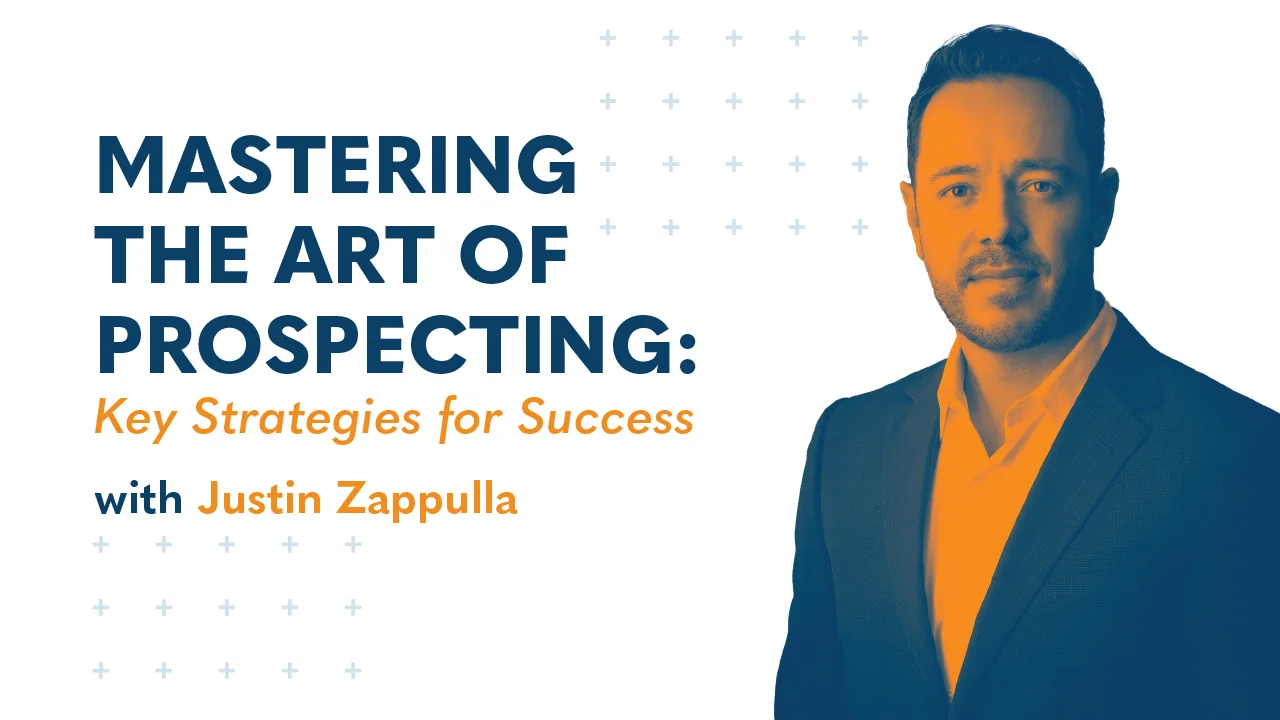7 Key Questions to Prospecting Success

Prospecting is one of the most fundamental sales skills. It can also be one of the most difficult to master. All sales organizations need new business. However, as the sales environment shifts, sellers must update how they prospect.
Last July, we hosted the webinar, Mastering the Art of Prospecting: Key Strategies for Success. Here, we examined the fundamental principles of modern prospecting. These include challenges, identifying the right prospects, preparing effective value messages, and reaching out to prospects.
As one of our most highly attended webinars, we’d like to revisit and address unanswered questions from the post-event Q&A session:
What is the best way to reach people in an era of sophisticated email and spam blockers?
This question gets to the heart of prospecting challenges. Consider the following:
- Subject lines
- Differentiate and personalize
- Leverage DNS settings to bypass spam filters
Your subject line is critical. This is often the first thing your prospect sees. If your subject is generic or not relevant to their needs, your message won’t be read. Analysis by Klenty found that personalizing the subject line boosts open rates. In fact, open rates jump to 39 percent when using the prospect’s name compared to only 10 percent.
Messages need to be researched, targeted, and timely. They must stand out from every other inquiry and request. Differentiate yours by tailoring them to the industry and customer. Also, get on the prospect’s social media before sending a direct message. Familiar names pique interest.
Finally, work with your marketing and IT teams to ensure that your email is deliverable. This must be optimized to where it is unlikely that your message gets caught in a spam filter. Confirm that your SPF, DKIM, and DMARC records are properly set up within your sales or marketing automation tools. These DNS settings also ensure better email delivery.
What does a successful cadence look like?
A sales cadence is an outreach sequence that allows sellers to better connect with prospects. These are scheduled for fixed days, times, and channels, such as phone calls, emails, LinkedIn requests, etc.
Industries and sales environments differ. Therefore, your cadence will vary. Transactional sales require a shorter cadence than complex sales. However, in each, a multipronged approach, with numerous touches, gives you the best opportunity. Use a variety of methods, including:
- Phone calls
- Phone calls with voicemails
- Emails
- Social media
There is no set answer which goes first. Some sellers start with phone calls and voicemails. Others start with emails followed by DMs to LinkedIn. The goal is to employ multiple touches over time to build awareness.
Also, you want a gradual build. Start with a soft launch, in which you don’t ask for anything. Instead, offer value through white papers and eBooks. Then, build to a harder ask, with a call to action, downloads, set appointments.
What about steps outside the cadence?
First, stick to your cadence. Of course, you may need some flexibility as things come up, but your cadence should do the following:
- Build a repeatable approach
- Measure effectiveness
- Flexibility to adjust as needed
Your goal is to build an effective system. This includes steps you repeat, such as touches via phone calls, voicemails, emails, DMs, etc.
Measure success to know what works. Varying too much from your cadence can skew the data. This will impede your progress building the best system.
In sales, things change. If a prospect keeps coming back to your website, respond. Always be aware of what customers are doing and adjust to what you see. However, stick to the repeatable cadence to gauge what works.
What is the average number of touchpoints?
On average, it takes eight touches before you net a meeting with a prospect. Note, this is an average; it might be less, or it might be more. Consider the following:
- Industry
- Sales environment
- Find the sweet spot
The number of touches can vary based on the industry and the prospect. You may require five touches. However, high-value prospects can jump to 10-12.
The number may also vary based on the sales environment. Enterprise clients often move slower. They have more decision makers and can take their time.
You must test and measure the number of touches until you find the sweet spot. Record what you do, the clients you target, and the result you achieve.
How do you best apply prospecting skills through intermediators or gatekeepers?
When prospecting through intermediators, like gatekeepers, influencers, and agents/brokers, help them build their own cadence. Share what they need to do in their channel to deliver your message. Consider these tips:
- Be simple and direct
- Earn trust
- Offer value
The best prospecting is upfront. Don’t try to hide what you are doing or what you are after. Ask if they know your contact and tell them what you want. For example, “Good morning. I am looking to connect with Max about the supply issues she mentioned on LinkedIn. Do you know Max?”
Earn their trust. Gatekeepers will present your name and reason for calling. They may note if you are nice and friendly. But they will definitely note if you are honest, forthright, and value their time. Do you sound like any random seller on a fishing expedition? Or do you legitimately know what you’re talking about?
As with prospects, present value to the gatekeeper. They are gatekeepers for a reason, and they are good at their jobs. Tell them why the prospect should take your call. Guide them to specifically say what you can do. For example, “I have several ideas on supply chains in the Quad Cities, which I know is a pressing issue for Max.”
What if you are a new employee covering a large area with no contacts?
It can be daunting but start with the basics. Create multiple Ideal Customer Profiles (ICPs) for who you are trying to reach. Who are they? What do they look like? Consider the following:
- Build a list
- Employ databases
- Leverage LinkedIn
Identify common challenges and build out your messaging. These should resonate with the issues the prospect faces. Build a list of previous clients.
Databases are an important tool. You may have to pay, but they can significantly expand your reach.
Also, consider social media. LinkedIn is good but think about tools like Sales Navigator. It can widen your net with the contacts you need and how you can connect with them.
How do you best scale talent for prospecting? What about recruiting?
Larger organizations have people who prospect all day. Their only job is building lists and expanding networks. Consider the following:
- Assessments
- Traits of effective prospectors
- Define specific roles
Talent assessments can measure the traits and skills needed to network. Use these to understand the sellers you need.
Traits to consider are comfort making cold calls, establishing rapport, and building relationships. Sellers must be resilient and know prospecting is a process. They must be undaunted by hearing no. Successful prospectors cannot give up after two or three tries. Persistence is never annoying if you provide timely and effective solutions.
Another consideration is skill level. Do you want seasoned prospectors with a record of success? Or do you want young, hungry salespeople whose skills you can mold to your specific organization, industry, and clientele?
Although prospecting is a fundamental sales skill, it must be refreshed to match the current sales environment. New technology not only makes prospecting easier. It opens doors to new opportunities. That’s why top sellers update their skills and processes to reach high-value prospects.
We invite everyone to check out our webinar Mastering the Art of Prospecting: Key Strategies for Success here.

- Account Planning (16)
- Awards (42)
- Client Testimonial (37)
- Personal Branding (21)
- Podcast (12)
- Research (77)
- Sales Career Development (90)
- Sales Coaching (165)
- Sales Consulting (141)
- Sales Culture (181)
- Sales Enablement (380)
- Sales Leadership (112)
- Sales Management (268)
- Sales Negotiation (11)
- Sales Prospecting (136)
- Sales Role-Playing (19)
- Sales Training (242)
- Selling Strategies (279)
- Soft Skills (78)
- Talent Management (101)
- Trusted Advisor (29)
- Virtual Selling (57)
- Webinar (13)




























